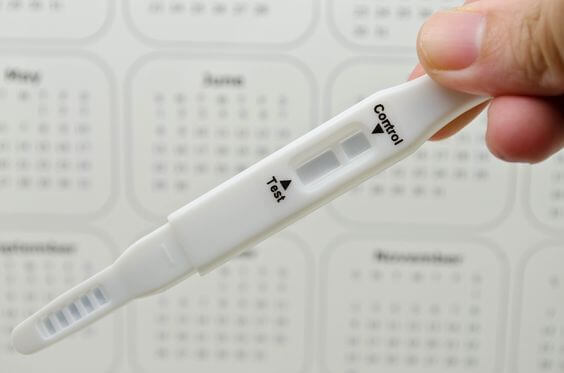The Sympto-thermal Method for Getting Pregnant

If you’re looking to become pregnant, then you should definitely learn about the sympto-thermal method. Not only can this method help you reach your objective, but it also helps women become more familiar with our own bodies.
Our menstrual cycle can sometimes be unpredictable, but generally speaking, they function perfectly.
Of course, there are no straight lines in nature, so keep in mind that this method isn’t fail-proof. However, knowing the signs your own body provides – which are very precise – can be very helpful.
At the same time, just like every woman’s personality is different, so are our bodies. Some women do everything possible to avoid a pregnancy, while other women want nothing more than to bear a child.
Whatever the case may be, becoming familiar with your own menstrual cycle will be beneficial. In fact, this method can also help you improve other aspects of your life as well.
The correct application of the sympto-thermal technique can help us be better prepared to become pregnant. At the same time, even if we don’t obtain the desired results, the method is still beneficial.
The information you gain about your own body provides precise data necessary for other methods of conception. To reap the benefits of this method, whatever your objective, you must be observant, organized and consistent.
How does the sympto-thermal method work?
Determining when you are most fertile is essential when you’re looking to have a baby. Having this information makes it possible for us to try to get pregnant at the right time of the month.
The same is true if you’re looking not to get pregnant. Knowing when you’re most fertile helps you know when you need to be most careful.
The symptoms that each woman experiences during her menstrual cycle repeat month after month. Therefore, it’s important that you know their significance so that you can identify what moment of your cycle you are in.
If you consciously follow the main changes that your body manifests, you can predict the arrival of your period. In the same way, you’ll know when you’re ovulating, and you’ll even recognize when you’re pregnant.
Life is a flame that is always burning itself out, but it catches fire again every time a child is born
-George Bernard Shaw-
The sympto-thermal method is not very well known, and it’s also a bit misunderstood. The misconceptions about this method trace back to old beliefs about family planning.
In a way, the natural variations in the feminine reproductive cycle can lead us to rule out this technique as a method of birth control.
However, the correct analysis of the signs and symptoms of each cycle can bring about optimal results when it comes to conceiving.
The sympto-thermal method has unquestionable effectiveness. However, positive results depend 100% on applying the method correctly.
In order to put this technique into practice, every woman must observe the following factors:
Basal temperature
Basal temperature is our body temperature when we wake up in the morning. In order to find out your precise basal temperature, you need to check it first thing when you wake up, even before you get out of bed.
You’ll notice that on the exact day of ovulation, your temperature will be higher than every other day of your cycle.
The rise in temperature is due to the increase of the hormone progesterone. Your basal temperature goes up an average of half a degree when you ovulate, and remains at this temperature until 24 hours prior to menstruation.
In other words, when you notice your basal temperature go back down, it’s because your period is about to begin.
To keep track of your basal temperature correctly, follow the steps below.
- Plan on taking your temperature at the same time every day. Take your temperature before you get out of bed, and always under your arm.
- Take note of any factor that could cause an alteration, such as having stayed up late the night before, taking medication that could bring down your temperature, etc.
- It’s very important to be rigorous and disciplined with this measurement. If you aren’t careful, you may record erroneous numbers that will only lead to confusion
- Write down your daily basal temperature in order to keep track of exact data regarding your cycle
- Certain symptoms have to do with pre-ovulation and post-ovulation. Therefore, we recommend you pay attention to your body’s sensations. Some of these symptoms include: Breast tenderness, gases in the ovarian zone, swelling of the abdomen, abdominal pain, headache, acne, dizziness, etc.
Cervical mucus

Some women have no difficulty in determining their wet days and dry days. This type of observations is made automatically.
However, in order to make the method work, you need to keep a detailed record. Although you may never give much importance to your vaginal discharge, it’s a symptom that indicates fertility.
Wash your hands before taking a sample, and then observe the texture of your discharge. The consistency will allow you to determine what point of your cycle you are at.
- At the end of menstruation, you will notice a certain dryness
- In the following days, the discharge will become more viscous, dense, and even sticky
- When you are nearing ovulation, your body will start to produce an increased amount of cervical mucus. At the same time, this discharge will be more liquid
- When your discharge is elastic, shiny, and similar to an egg white, this is a sign of your fertility.
Opening and position of your cervix
Measuring the opening and position of your cervix involves inserting your finger to evaluate. Flex your knees and insert your middle finger into your vagina to touch the walls of your uterus, or cervix.
You’ll find it with the tip of your finger in the upper end of your vagina, and it will feel like the tip of a nose. Sometimes you’ll find it more easily – this is a sign that you’re at the beginning of your cycle.
When you ovulate, it will be more difficult to reach your cervix. You may barely be able to touch it.
Don’t count on cervical measurement alone to determine your cycle, but observe other symptoms as well. The examination of your cervix can be imprecise if you’re not sure what you’re touching.
That being said, your cervix will be smoother and the opening of your vagina will be wider when you are more fertile. After your fertile period, your uterine wall will close in order to protect the uterus.
All cited sources were thoroughly reviewed by our team to ensure their quality, reliability, currency, and validity. The bibliography of this article was considered reliable and of academic or scientific accuracy.
- Díaz, S., & Schiappacasse, V. (2011). ¿ Qué y cuáles son los métodos anticonceptivos. Chile: Instituto Chileno de Medicina Reproductiva. http://www.icmer.org/documentos/anticoncepcion_de_emergencia/Que%20y%20cuales%20son%20los%20metodos%20anticonceptivos%2025032017.pdf
- Haghenbeck-Altamirano, F. J., Ayala-Yáñez, R., & Herrera-Meillón, H. (2012). Métodos de planificación familiar basados en el conocimiento de la fertilidad. Ginecología y Obstetrica de México, 80, 276-284. http://nietoeditores.com.mx/nieto/Ginecologia/2012/abril12/art.revision_metodo.pdf
- Soler, F. (2005). Asesoramiento/educación sanitaria a la mujer. Métodos anticonceptivos naturales (II). Matronas Profesión, 6(3), 5-13. https://www.federacion-matronas.org/wp-content/uploads/2018/01/vol6n3pag5-13.pdf
This text is provided for informational purposes only and does not replace consultation with a professional. If in doubt, consult your specialist.








